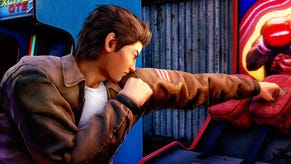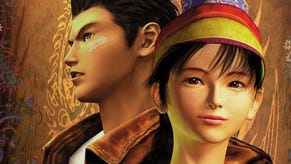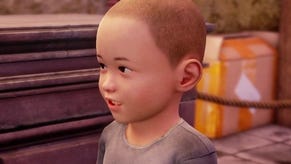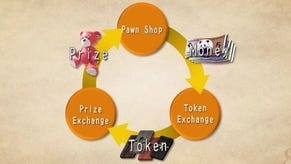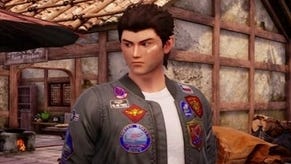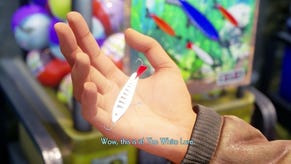Shenmue 3 review - a faithful follow-up to an all-time classic
Golden harvest.
Against all odds, here it is. 18 years on from the last episode, and well after most had given up hope that Ryo Hazuki would ever find his way out of the Guilin cave where Shenmue 2 so abruptly ended, perhaps the most remarkable thing about Shenmue 3 is that it exists at all. Even more remarkable, then, that director Yu Suzuki - himself an absentee from the frontlines of games development for almost two decades - has delivered a worthy successor to what many consider an all-time great. Shenmue 3 takes the template of those age-old Dreamcast games and refines it in small, numerous ways - delivering a game that's both faithful and finessed.
What this is not, though, is a reimagining. This isn't the game to make a Shenmue devotee of the doubtful, and the curious circumstances behind Shenmue 3's development have made for a curious game; completely ignorant of modern trends in open world gaming, or indeed trends of the last 20 years, it's as if it has been developed in a sealed bubble, emerging as a relic of the past. It is archaic and arcane, as its predecessors often were, though it now no longer has the allure of being at the vanguard of video games. From being one of the medium's most expensive productions, Shenmue 3 is explicitly double-A; it's a straight-to-DVD follow-up to an old blockbuster.
Yet it still has that cinematic sweep, and manages to stay true to the aesthetic and ambience of the originals. Shenmue was one of the original open worlds, and you may well point to other open world games that came in its wake that have evolved almost beyond recognition since back then; Grand Theft Auto, which had its first 3D outing a month after the launch of Shenmue 2, or even Yakuza, the series formed from Shenmue's ashes. Shenmue exists in its own bubble, though. It always was, and always will be, its own thing; a softer, more stately thing that moves with the urgency of a 70s wuxia film and cares not for more modern action flourishes.
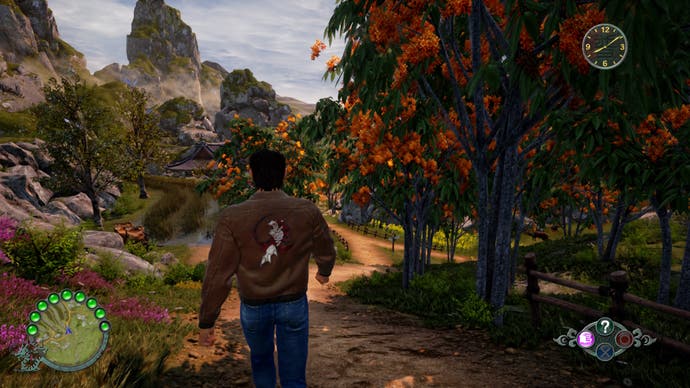
Shenmue 3 is entirely faithful to that. There are lightly updated controls and a small selection of new systems but mostly it feels as if this was made soon after Shenmue 2's release back in 2001 then placed in a vault. There are the same inter-titles (though limited in appearance given that the world and its interiors are now seamless) the same menu fonts, the same QTEs and so many of the same idiosyncrasies that made Shenmue, for better for worse, what it was. This, like the originals, has a slowness that, if you're unable to lock into its rhythm, can seem outright audacious.
Whether you love or loathe that languid nature is a matter of taste, though either way know that Shenmue 3 slows the pace further still. Partly that's a reflection of where it finds itself in Ryo's arc; on the trail of his father's murderer, Shenmue's protagonist slowly finds his way from his hometown just beyond the outskirts of Tokyo on to the heart of Hong Kong and then here, to Guilin. Just as Shenmue sold us on the mundane specifics of life in Yokosuka, and just as Shenmue 2 sold us on the bustle of a city's street markets, so Shenmue 3 transports us to rural China in the late 80s. It's both as exhilarating and as exasperating as being there, I imagine.
Ryo arrives a stranger in Bailu, a village in the shadow of the Guilin hills, and in his quest for information pinballs from villager to villager. A typical quest line is an old lady that swallowed the fly routine - speak to every villager to piece together the information to find the martial arts expert who'll then only answer questions in exchange for liquor and buns you'll have to buy from the market and who'll then withhold the most important information until you've bought him the most expensive liquor which sends you into days of labour to procure the funds. And then bring it to him only for him to say first you must beat a certain fighter at the local dojo. Done all that? Catch ten chickens, and then you can talk. Or at least you can the next day, because our friend wants to get some rest first so you'll need to find a way to occupy yourself until sundown. Maddening? Perhaps, though if you're in step with Shenmue's leisurely pace it can still feel sublime.
Shenmue 3 is the training montage without any of the jump cuts. It's long and slow and sometimes you wonder exactly where it's heading. 18 years on and Suzuki's clearly in no rush to finish this tale - as he's previously said, Shenmue 3 does not close out the series. It certainly brings its own flavour, the series' melancholy being brought to the fore with Ryo getting closer than ever to his father's footsteps, though it doesn't make giant strides in Ryo's tale of revenge either. I'll avoid spoilers, but in the broadest strokes there are returning stars and something approaching a satisfying climax even as the story is once again left in stasis.
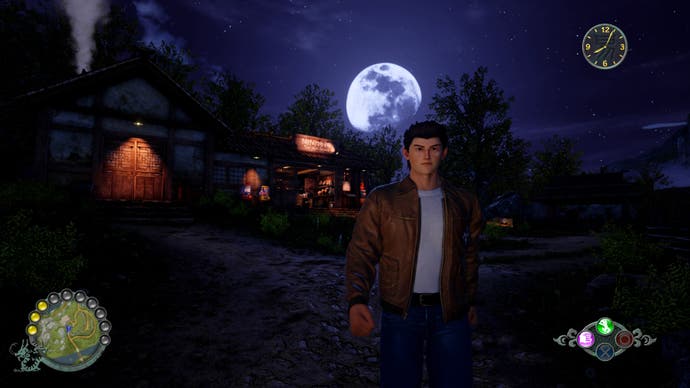
None of that's central to Shenmue's charm, though. Yu Suzuki's talent isn't so much storytelling as it is transporting you somewhere else entirely. In his heyday it was via imposing taikan cabinets, taking you into the cockpit of Afterburner's jet fighter or behind the wheel of Out Run's Ferrari. Shenmue's ambitions are more modest - as Suzuki's got older, he's matured from boy's own fantasies to tourist excursions favoured by the middle-aged - but the craft and detail can be just as impressive, something as true as ever in Shenmue 3 despite the lesser resources to hand.
Shenmue's open worlds aren't judged by their size (though the world of Shenmue 3, heavily gated and slowly unlocking over time, compares favourably in this regard to previous games) but by their detail, and the pastoral haze of Bailu, the density of Niawou and further beyond are told with breathtaking fidelity. Some of that detail is enjoyably pointless - the interiors of several rural Chinese houses are there to be poked around as you rifle through drawers - and it conspires for a world that feels very alive. Villagers run their own routines as the clock winds on, each with their own stories, their own faces and their own names (in a new feature here, names also appear as you approach villagers, making a working intimacy with each one that much easier). It's a game that has you running in circles, but one that rewards the repetition too as you check in on people and learn more of their story and character and maybe even run errands for them; a hyper-real Animal Crossing more than a GTA, really, with a rhythm that's soothingly sedate.
Shenmue 3 is quick to push you into a routine of your own too. It starts with a semblance of domesticity as you rise in the house you share with Shenhua, before you make a sunrise walk into town, through rice fields and thick crops of sunflowers set along a muddy path slicked by yesterday's rainfall, picking herbs along the way that you might concoct into a medicine you can sell later. You go about your daily chores, maybe chopping wood to earn some cash, maybe gambling your way to profit or maybe just collecting capsules in an attempt to complete a set that might again be sold on for gains. There's a taut economy that binds Shenmue 3, and that makes engaging in busywork a necessity.

The busywork is well-executed, though, the mini-games displaying the kind of flair you'd hope for from a master of the arcade. The arcade mini-games return too - minus the Sega-licensed ones, sadly but understandably - with a handful of new entries to boot. They're marvellous electromechanical things, gently referencing arcade games of an even greater vintage than Out Run such as Sega's own Periscope or Grand Prix - and if you're a nerd for that kind of thing it's a thrill seeing Yu Suzuki pay his dues to the games that paved his own way.
In the combat that punctuates your adventure there are the obvious flashes of Virtua Fighter, though this is nowhere near as finessed. It's functional, though, and perfectly satisfying as you learn and unlock new movesets. Indeed, Shenmue 3 is a deeper RPG than the first two games, with a proper levelling system to combat as you work your way up the ranks at the local dojo and collect new moves on your way - while elsewhere you've an HP bar to tend to by keeping Ryo well-fed with various items of food. It brings Shenmue that one step closer to the Virtua Fighter RPG that it was first conceptualised as all those years ago.
And all these years later, it makes for an entry that, as unlikely as it is, is more finessed and fully-featured than the first two games. A more astute critic might point out that the performances are uneven, the character models sometimes look wayward, you're kind of limited as to what you can do and nothing of note really happens. That's not me, I'm afraid. Yes, Shenmue 3 can look and play like a Dreamcast game. But it looks and plays like a Dreamcast game that's as off-kilter, maddening, magical and majestic as the Shenmue and its sequel, both all-time classics. I think there's good reason to rejoice in that.




